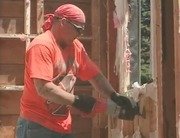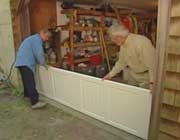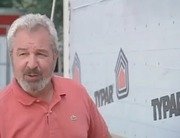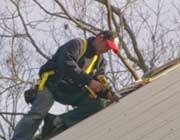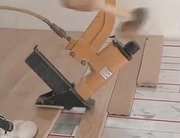More Video Building an Addition for an Elderly Parent Finishing up with Cedar Porch, Fireplace, and Stone Veneer
Insulating the Roof and Installing Mold-Resistant Drywall
The roof of the new addition is being insulated – in an environmentally conscious way – to retain the heat from the radiant heating system. Moisture- and mold-resistant drywall is being used throughout the addition.
Clip Summary
The roof of the new addition is being insulated to retain all the heat generated from the radiant heating system. Paul Johnson of Alpine Insulators reviews the installation process. Fire-retardant netting is stapled in place to hold dense-packed cellulose in place. Cellulose is a great thermal insulator and sound attenuator. In the interior partition wall where the bathroom will be located, cellulose will be installed directly against the drywall.Bill Hulstrunk of National Fiber discusses cellulose insulation, which has been around since about 1920 and used extensively since 1970 in both new and existing construction. Borates are added to make the cellulose fire retardant, and mold and insect resistant. Because of the added borates, a propane torch can be put to the cellulose without igniting it. These borates are naturally occurring and the cellulose is made of 83 percent recycled content, making this type of insulation an environmentally conscious, green choice. The cellulose in this house is being used in an unvented application. Because the material is packed very tightly, it reduces the chance that warm, moist air will penetrate the cavity and create mold growth.
Georgia Pacific DensArmor drywall is being used throughout the addition. The face of this drywall is made of fiberglass so there is no danger of hosting any sort of mold growth. Attaching the drywall to a foam-and-concrete structure posed a bit of a challenge. To address this, steel J-beads were installed horizontally as nailers for the drywall screws.

